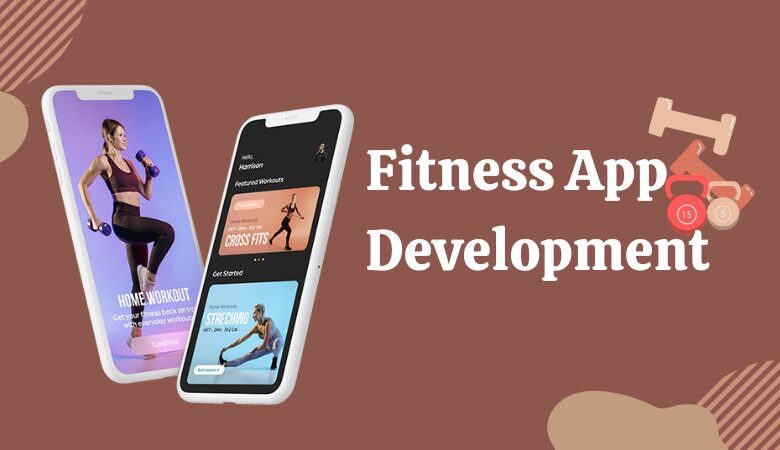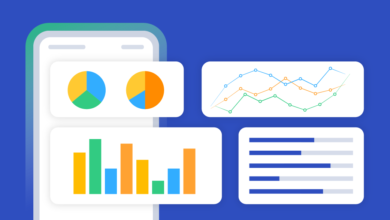A Comprehensive Guide to Fitness App Development

The health and fitness industry is experiencing a seismic shift, with the proliferation of mobile technology empowering individuals to take control of their well-being like never before. This surge in demand has given rise to a booming fitness app industry, transforming how people approach their fitness goals. In this comprehensive guide, we’ll delve into the dynamics of this industry, explore current trends, analyze the market, and provide invaluable insights into fitness app development.
Overview of the Booming Fitness App Industry
The fitness app industry has become a juggernaut, catering to the diverse needs and preferences of users worldwide. Fitness apps have become indispensable tools in achieving wellness goals, from workout enthusiasts to those on a journey to better health.
Current Trends in Fitness App Usage
To navigate the ever-evolving landscape of fitness apps, it’s crucial to understand current trends. Whether it’s the gamification of fitness, integration with wearable devices, or the rise of virtual communities, staying abreast of these trends is pivotal for developers and users alike.
Market Analysis
Competitor Analysis and Market Gaps
A thorough examination of the competitive landscape is essential to identify market gaps and potential opportunities. By understanding the strengths and weaknesses of existing players, developers can carve out niches that cater to unmet needs within the market.
Understanding the Competition:
Conducting a thorough competitor analysis involves examining existing fitness apps to discern their strengths, weaknesses, and unique selling propositions. This insight aids in positioning a new fitness app effectively in the market.
Identifying Market Gaps:
By scrutinizing competitors, developers can pinpoint underserved or overlooked segments within the market. Recognizing these gaps enables the creation of niche-specific features or services that meet unmet user needs, setting the app apart from the competition.
User Feedback and Reviews:
Analyzing user feedback and reviews on existing fitness apps provides valuable insights into consumer preferences, pain points, and feature requests. This data informs the development process, ensuring the new app addresses user concerns and delivers an enhanced experience.
Market Trends and Opportunities
Technological Integration:
As technology continues to evolve, opportunities arise for integrating cutting-edge features such as augmented reality (AR) workouts, artificial intelligence-driven coaching, and compatibility with emerging wearable devices. Staying abreast of these trends ensures that a fitness app remains relevant and appealing to users.
Global Market Expansion:
Given the global reach of fitness apps, developers should consider market trends in various regions. Tailoring the app to diverse cultural preferences and health trends enables broader market penetration and user engagement.
Monetization Strategies:
Understanding the monetization strategies employed by successful fitness apps is crucial. Whether through subscription models, in-app purchases, or partnerships, identifying effective revenue streams ensures the sustainability and profitability of the developed app.
What Is Fitness App Development?
Fitness app development involves the creation of mobile applications tailored to meet the diverse needs of individuals seeking to enhance their physical well-being. These apps can range from personalized workout guides and nutrition planners to comprehensive health and wellness trackers.
The process encompasses strategic planning, user-friendly design, coding, rigorous testing, and post-launch optimization to deliver a seamless and engaging user experience. By leveraging technology, fitness app development aims to empower users to achieve their health and fitness goals while catering to the evolving trends and preferences within the industry.
Types of fitness apps
● Workout and Exercise Apps:
Workout and Exercise Apps cater to fitness enthusiasts by providing curated routines and instructional videos. These apps guide users through various exercises, accommodating different fitness levels and goals. With progress-tracking features, they offer a comprehensive solution for individuals looking to enhance their physical well-being through targeted workouts.
● Nutrition and Diet Apps:
Nutrition and Diet Apps focus on the dietary aspect of fitness, offering features like meal planning, nutritional guidance, and meal tracking. Tailored to individual preferences and health goals, these apps play a crucial role in complementing physical activity, fostering a holistic approach to health and wellness.
● Health and Wellness Tracking Apps:
Health and Wellness Tracking Apps go beyond exercise, monitoring various health metrics such as heart rate, sleep patterns, and stress levels. By providing a comprehensive overview of users’ well-being, these apps enable individuals to take a holistic approach to their health, making informed lifestyle choices for overall wellness.
Process Steps to Develop your Fitness app
Developing a fitness app involves a structured process to ensure a seamless user experience.
1. Requirement Analysis
Understanding the target audience, features, and goals of the app is the foundational step in the development process.
2. Design and User Experience (UX) Planning
A user-friendly interface and seamless navigation are key to the success of a fitness app. UX planning ensures that the app aligns with user expectations.
3. Development and Coding
This phase involves turning the conceptualized design into a functional app through coding and programming.
4. Testing and Quality Assurance
Thorough testing is conducted to identify and rectify any bugs or glitches, ensuring a smooth user experience.
5. Deployment and Launch
The app is launched in app stores, making it accessible to users globally.
6. Post-launch optimization and Maintenance
Continuous updates and optimizations based on user feedback and evolving trends are critical for the app’s sustained success.
Cart Your Favourite Features to Fitness app development
As users increasingly demand personalized experiences, integrating the right features becomes paramount for the success of a fitness app.
Personalized Workout Plans
Tailoring workout plans based on individual fitness levels, goals, and preferences enhances user engagement and satisfaction.
Integration with Wearable Devices
Syncing with wearable devices allows for real-time tracking of fitness metrics, providing a comprehensive overview of the user’s health and progress.
Nutritional Guidance and Meal Tracking
Incorporating features that offer nutritional advice and allow users to track their meals fosters a holistic approach to health and fitness.
Social Community and Challenges
Creating a social platform within the app encourages users to connect, share experiences, and participate in challenges, fostering a sense of community and motivation.
Augmented Reality (AR) Workouts
The integration of AR technology provides an immersive and interactive workout experience, elevating user engagement.
Motivational Goal Tree
Visualizing progress through a goal tree allows users to set and track their fitness milestones, motivating them to stay committed to their journey.
Training Videos
In-app training videos by fitness experts offer guidance and inspiration, catering to users with varying levels of expertise.
Future Growth and Potential
● Predictions for the Future of Fitness Apps
The future of fitness apps holds exciting possibilities, with advancements in technology driving innovation. Predictions include enhanced personalization, AI-driven coaching, and further integration with smart devices.
● Emerging Technologies and Opportunities
As technology evolves, opportunities abound for developers to explore augmented reality, artificial intelligence, and machine learning to create cutting-edge fitness solutions.
How much does it cost to make a fitness app?
The cost of developing a fitness app varies based on factors such as features, complexity, and the development team’s expertise. Simple apps with basic functionalities may have a lower cost, while more advanced applications with personalized plans, wearable device integration, and social features can incur higher expenses. Additionally, geographic location and the level of customization contribute to the overall development cost. Seeking a detailed quote from experienced app development professionals helps provide a more accurate estimate tailored to specific project requirements.
Ready to Build a Fitness App with Moontechnolabs for Your Business?
Ready to bring your fitness app vision to life? Partner with Moontechnolabs, a trusted name in app development. With a proven track record, Moontechnolabs offers tailored solutions for your business, ensuring a seamless and successful fitness app development journey. Their expertise, commitment to quality, and dedication to client satisfaction make them an ideal choice to turn your fitness app idea into a reality. Elevate your business in the booming fitness app industry with Moontechnolabs as your development partner.
FAQs
How Can I Create My Fitness App?
Creating a fitness app involves several steps, including requirement analysis, design planning, development, testing, deployment, and post-launch optimization. Seeking the expertise of a reputable development team ensures a smooth process.
Is It Free to Launch an App?
While launching an app on app stores may involve certain fees, the development process itself incurs costs related to design, coding, testing, and other essential components.
What Are the Key Trends in Fitness App Usage?
Current trends include gamification, wearable device integration, and social community features. Staying abreast of these trends is essential for developers aiming to create successful fitness apps.
Why Is a Holistic Approach Important in Fitness App Development?
A holistic approach, encompassing both physical fitness and overall well-being, aligns with the evolving expectations of users. Integrating features that cater to nutrition, mental health, and social connectivity enhances the user experience.
What Differentiates iOS and Android Platforms in Fitness App Development?
While the core functionality remains similar, developers must consider platform-specific design guidelines and user preferences when creating fitness apps for iOS and Android. Customization for each platform ensures optimal user experiences.




